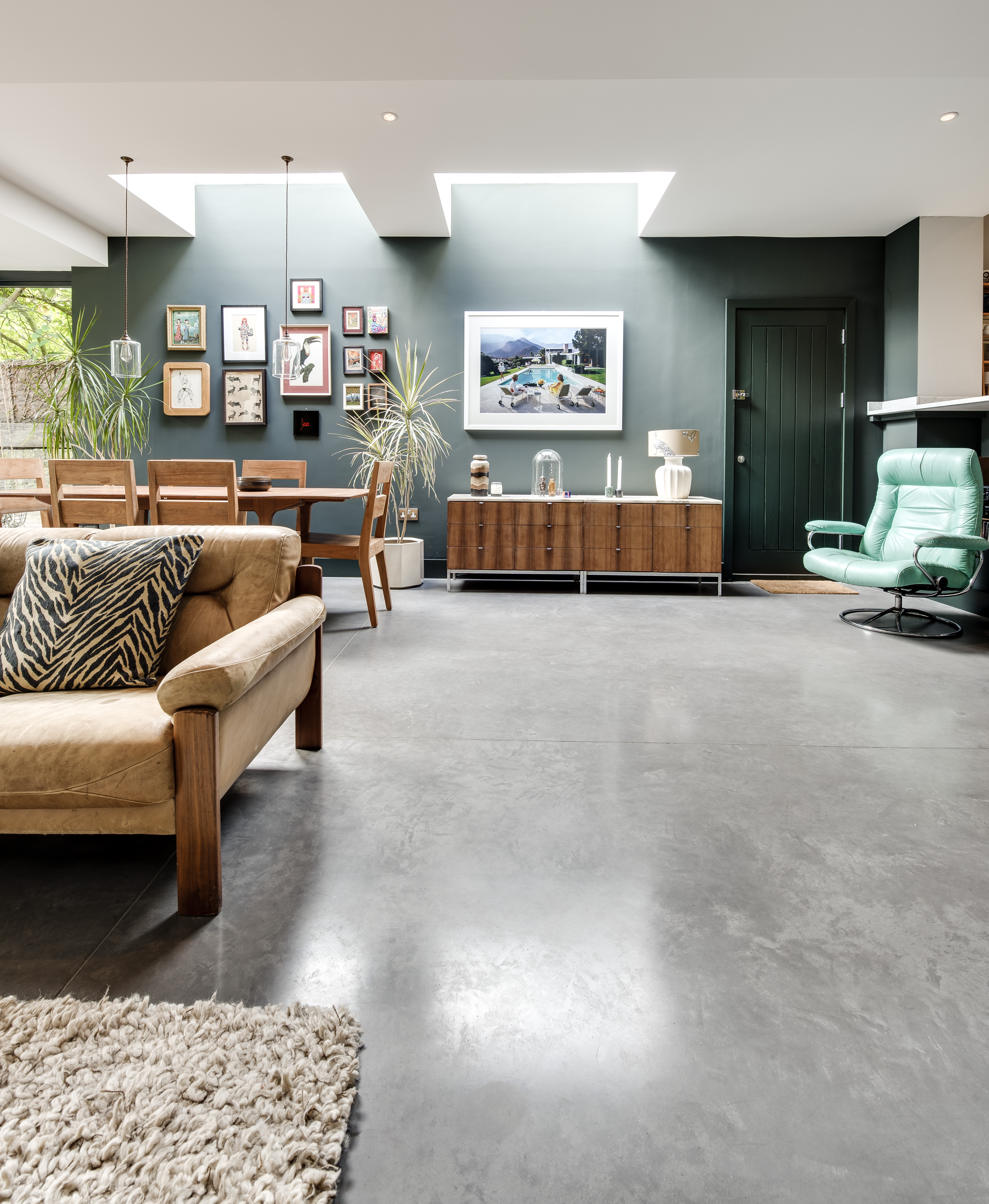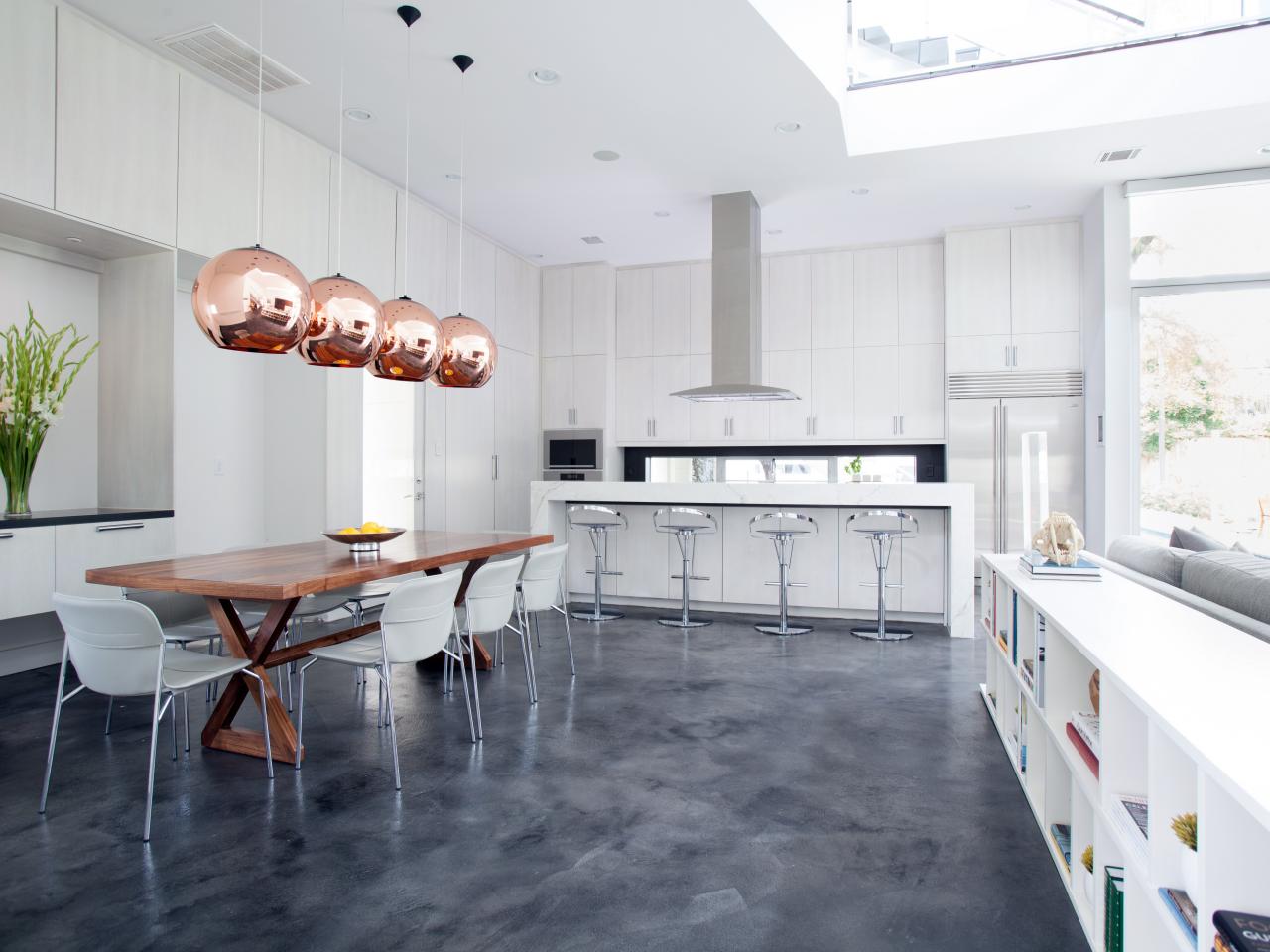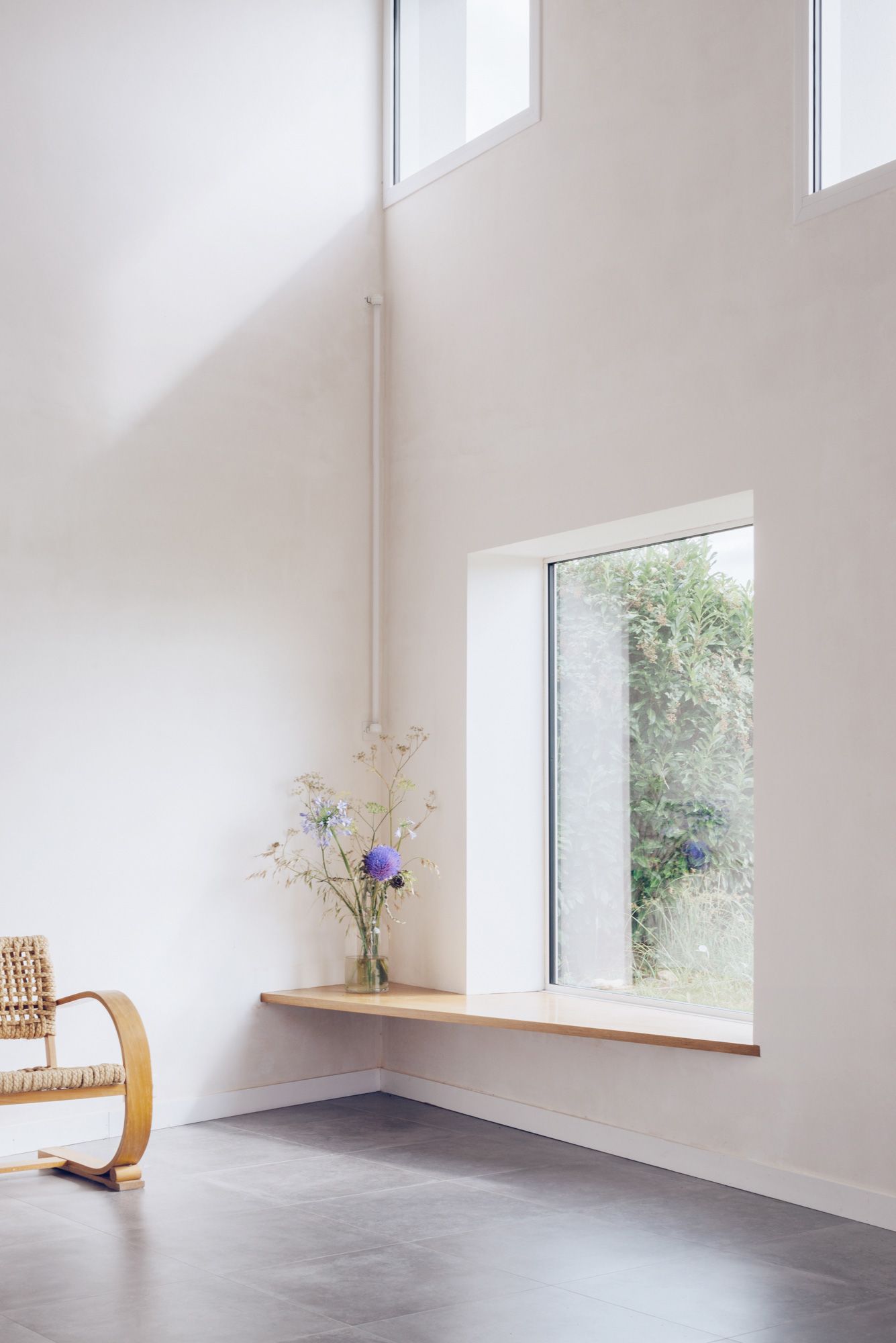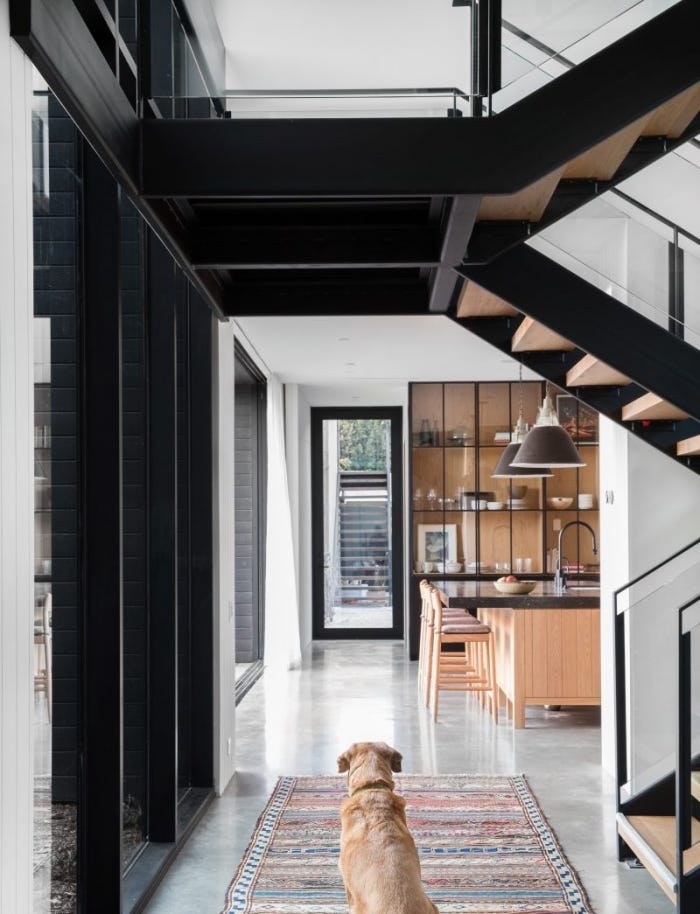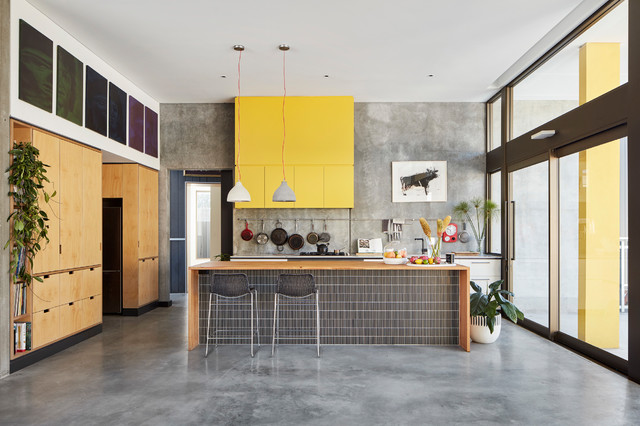The Benefits of Concrete Floors
Concrete floors have become increasingly popular in recent years, and for good reason. They offer a range of benefits that make them a practical and stylish choice for any home or commercial space. Whether you’re considering renovating your living room or updating a commercial building, here are some reasons why concrete floors are worth considering.
- Durability: Concrete floors are known for their exceptional durability. Unlike other flooring options, such as carpet or hardwood, concrete can withstand heavy foot traffic and is resistant to scratches, stains, and dents. This makes it an ideal choice for high-traffic areas like hallways, kitchens, and living rooms.
- Low maintenance: One of the biggest advantages of concrete floors is their low maintenance requirements. Unlike hardwood floors that require regular polishing or carpets that need frequent vacuuming, concrete floors can be easily cleaned with a simple sweep and mop. This not only saves time and effort but also reduces the need for harsh cleaning chemicals.
- Versatility: Concrete floors offer endless design possibilities. They can be stained, polished, or stamped to create a variety of looks, from sleek and modern to rustic and industrial. Additionally, concrete floors can be customized with different colors, patterns, and textures, allowing homeowners and designers to create unique and personalized spaces.
- Cost-effective: Compared to other types of flooring, concrete floors are a cost-effective choice. Installation costs are generally lower than those of hardwood or tile floors, and their long lifespan means that they won’t need to be replaced as frequently. Additionally, the energy-efficient properties of concrete floors can help reduce heating and cooling costs, making them a smart investment in the long run.
- Eco-friendly: Concrete is a sustainable and environmentally friendly material. It is made from abundant natural resources and has a low carbon footprint compared to other flooring options. Concrete floors can also help improve indoor air quality by reducing the accumulation of dust, allergens, and mold, making them a healthier choice for homes and commercial spaces.
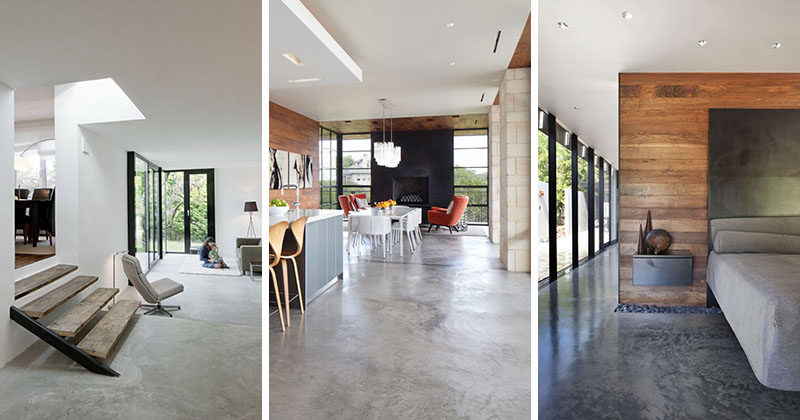
Using Concrete Floors to Create a Modern and Stylish Living Space
Concrete floors have come a long way from their industrial origins and are now being used to create modern and stylish living spaces. With their sleek and minimalist aesthetic, concrete floors can add a touch of contemporary elegance to any home. Here are some tips on how to use concrete floors to create a stylish living space.
Embrace the raw beauty: One of the unique characteristics of concrete floors is their raw and natural beauty. Instead of covering them up with rugs or carpets, consider leaving them exposed to showcase their unique texture and color variations. This can create a striking visual contrast and add a touch of industrial charm to your living space.
Play with colors and patterns: Concrete floors can be transformed with the use of stains, dyes, and decorative techniques. Consider adding a pop of color to your concrete floors by staining them in vibrant shades or creating intricate patterns with stencils. This can help create a focal point in your living room and add a sense of personality to the space.
Combine with other materials: Concrete floors can be beautifully complemented by other materials such as wood, metal, or glass. Consider incorporating these materials in your furniture, lighting fixtures, or decorative elements to create a harmonious and balanced look. For example, a sleek glass coffee table or a wooden accent wall can add warmth and contrast to a room with concrete floors.
Use rugs and textiles: While concrete floors can be visually stunning on their own, incorporating rugs and textiles can help soften the space and add warmth and comfort. Choose rugs with interesting textures and patterns that complement the overall style of the room. This can also help define different areas within an open-plan living space.
Pay attention to lighting: Lighting plays a crucial role in enhancing the beauty of concrete floors. Consider using a combination of natural and artificial lighting to highlight different areas and create a welcoming ambiance. Pendant lights or floor lamps can be used to create focal points and cast interesting shadows on the concrete surface.
Why Concrete Floors Are a Smart Investment for Your Home
Investing in concrete floors for your home is not only a design choice but also a smart investment. Concrete floors offer a range of benefits that can increase the value of your property and save you money in the long run. Here are some reasons why concrete floors are a wise investment for your home.
Long-lasting durability: Concrete floors are known for their exceptional durability. Unlike other flooring options that may require frequent repairs or replacements, concrete floors can withstand heavy foot traffic, moisture, and wear and tear. This means that they can last for decades, saving you money on repairs and replacements.
Energy efficiency: Concrete floors have excellent thermal mass properties, which means they can absorb and retain heat. This can help regulate indoor temperatures and reduce the need for excessive heating or cooling. As a result, homeowners can enjoy lower energy bills and a more comfortable living environment.
Allergy-friendly: Unlike carpets that can harbor dust, allergens, and pet dander, concrete floors are hypoallergenic and easy to clean. They don’t trap allergens, making them a healthier choice for individuals with allergies or respiratory conditions. Additionally, their smooth surface doesn’t provide a breeding ground for mold or mildew, further improving indoor air quality.
Versatility and design options: Concrete floors offer endless design possibilities. They can be customized with different stains, colors, and textures to match your personal style and design preferences. Whether you prefer a sleek and modern look or a more rustic and textured appearance, concrete floors can be tailored to suit your needs.
Low maintenance: Concrete floors are incredibly low maintenance compared to other types of flooring. They don’t require regular polishing, waxing, or deep cleaning. A simple sweep and mop are usually sufficient to keep them looking clean and beautiful. This not only saves you time and effort but also reduces the need for costly cleaning products.
Tips for Cleaning and Caring for Your Concrete Floors
Cleaning and caring for your concrete floors is essential to maintain their beauty and prolong their lifespan. While concrete floors are known for their durability and low maintenance, proper care can help prevent stains, scratches, and other forms of damage. Here are some tips for cleaning and caring for your concrete floors.
Regular sweeping and mopping: Regular sweeping or vacuuming is crucial to remove dirt, dust, and debris that can scratch the surface of your concrete floors. Use a soft-bristle broom or a vacuum cleaner with a brush attachment to prevent any damage. Follow up with a damp mop using a mild pH-neutral cleaner specifically formulated for concrete floors.
Deal with spills immediately: Concrete floors are not completely impervious to stains, especially if spills are left unattended. Clean up any spills as soon as they occur to prevent them from seeping into the concrete and causing permanent staining. Blot the spill with a clean cloth or paper towel and clean the area with a mild cleaning solution.
Avoid abrasive cleaning tools: Harsh cleaning tools like steel wool or scrub brushes with stiff bristles can scratch the surface of your concrete floors. Instead, use a soft mop or a microfiber cloth for regular cleaning. If you encounter stubborn stains, use a soft brush with nylon bristles to gently scrub the area.
Use pH-neutral cleaners: Acidic or alkaline cleaners can damage the protective sealant and discolor your concrete floors. Always use pH-neutral cleaners specifically formulated for concrete floors. These cleaners are gentle yet effective in removing dirt and stains without compromising the integrity of your floors.
Apply a protective sealant: Applying a protective sealant can help prevent stains, moisture penetration, and damage to your concrete floors. Choose a high-quality concrete sealant and follow the manufacturer’s instructions for application. Regularly reapply the sealant every few years or as recommended to maintain its effectiveness.
How Concrete Floors Can Help Improve Indoor Climate Control
Concrete floors offer more than just a sleek and modern aesthetic; they can also help improve indoor climate control. With their thermal mass properties and energy-efficient characteristics, concrete floors can contribute to a more comfortable and sustainable living environment. Here are some ways concrete floors can help improve indoor climate control.
Thermal mass properties: Concrete has excellent thermal mass properties, which means it can absorb, store, and release heat. This helps regulate indoor temperatures by minimizing temperature fluctuations and reducing the need for excessive heating or cooling. In cold climates, concrete floors can absorb heat during the day and release it at night, providing passive heating. In warmer climates, concrete floors can absorb heat from the surroundings and keep the space cooler.
Energy efficiency: Concrete floors can contribute to energy efficiency by reducing heating and cooling costs. Due to their thermal mass properties, concrete floors can help maintain stable indoor temperatures, reducing the reliance on heating and cooling systems. This not only saves energy but also lowers utility bills and reduces the carbon footprint of your home.
Radiant heating systems: Concrete floors are an excellent match for radiant heating systems. These systems use radiant heat, either through electrical cables or water pipes, to warm the floor and subsequently the room. Concrete floors can retain and distribute heat evenly, creating a comfortable and cozy living space. This type of heating is energy-efficient and can be controlled through individual room thermostats for optimal comfort.
Insulation properties: Concrete floors can act as insulation, preventing heat loss or gain through the floor. This is especially beneficial in homes with basements or on the ground floor, where heat loss through the floor can be significant. By insulating the concrete floors, you can reduce heat transfer, improve energy efficiency, and create a more comfortable living environment.
Improved indoor air quality: Concrete floors can help improve indoor air quality by minimizing the accumulation of dust, allergens, and mold. Unlike carpets that can trap dust and other allergens, concrete floors have a smooth and non-porous surface that is easy to clean. Regular sweeping and mopping can help remove dust particles, reducing the risk of allergies and respiratory issues.
Stylish Concrete Floors Ideas – Inspiring Pictures and Examples
Concrete Flooring Stands Up to the Test in the Kitchen
Styles of Stained Concrete Floors – Craftsman Concrete Floors
Pros And Cons Of Concrete Flooring
Is Polished Concrete Flooring Right for Your Home?
Choose Concrete Polished Floors for Home or Office
Benefits to Concrete Floors for Everyday Living
Related Posts:
- Polished Concrete Floors For Patios
- White Concrete Floor Tiles
- Acid Wash Concrete Floor Colors
- Concrete Floor Thickness For A Garage
- Concrete Floor For Bathroom
- Interior Concrete Floor Ideas
- Kitchen Stained Concrete Floors
- Concrete Floor Tile Thickness
- How To Stain Concrete Floors DIY
- DIY Concrete Floor Grinding
